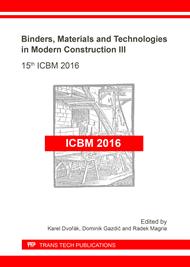p.88
p.94
p.100
p.106
p.111
p.118
p.123
p.129
p.134
Computational Simulation of Behaviour of Developed Thermal Insulation Plaster Based on Silicates with the Use of Program WUFI 2D
Abstract:
The investigation of the hygrothermal behavior of advanced silica materials, which are today in ever increasing demand during the reconstruction of building envelopes, is an important point of research. For determining the moisture balance in building structures, the Glaser method is most frequently used to day which, however, considers during calculations water diffusion only in stationary state at simplified marginal conditions; it does not take into account the moisture transport in the capillary system of the material structure, nor the sorption properties of the material. The goal of the research is therefore to gain deeper knowledge of the way heat and moisture transport through the pore structure of these silica materials. The paper describes verification of efficacy of thermal insulation and rehabilitation silicate plastering. Based on experiences from previously research and their results were chosen 2 developed plasters for computational simulation of their behavior in the case of detail of window jamb. One type of developed plastering was placed from the site of interior and the second type of plastering was applied from the site of exterior.
Info:
Periodical:
Pages:
111-117
Citation:
Online since:
October 2017
Authors:
Price:
Сopyright:
© 2017 Trans Tech Publications Ltd. All Rights Reserved
Share:
Citation:


